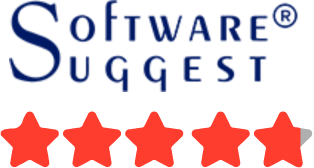The usage of open-source software in the education sector is increasing. This is not surprising given that educational organizations like schools and colleges find it to be quite appealing due to its unique benefits.
The general consensus is that more funding must be allocated to support digital education. This became much clearer after the outbreak.
The most well-liked open-source Campus Management Software software used in education is included in this article. Learn what software may be used at your school or institution in the next paragraphs, in addition to why open-source software is especially helpful for the field of education.
What is open-source software and why it’s used in education?
It is well known that acquiring funding for new initiatives may be challenging for educational institutions. Because it is typically less expensive than proprietary technology, open-source software has become popular in educational institutions.
Smaller educational institutions, including primary schools, can benefit greatly from the free version of open-source campus software. It has all the capabilities needed for thorough school administration, including some innovative ones like board management, grading modules, library databases, test management, attendance automation, and even dorm management. The smaller campuses should adopt open-source software, as user-friendly education software since it is better suited to lower student populations. They can utilize the power of open-source software to keep institutions operating efficiently in the fast-paced academic climate.
The primary explanations for why open-source campus management software is beneficial for educational institutions are given here.
Cost-effectiveness
Although not always free, most open-source campus management software is much less expensive than proprietary software. The fact that open-source software is available for a free trial by users and educational institutions to test it out and evaluate how it works with their systems is very significant.
They may then scale up and roll out the software throughout the entire institution. They are certain that the current solution will benefit them in the long-term by doing this. Also, open-source campus management software reduces concerns about vendor support.
Flexibility
Institutions in particular have a comprehensive IT infrastructure that calls for adaptable solutions. Open-source campus management software is far more versatile and lets users modify the code to meet their specific needs, whereas proprietary software is usually built to be easily configurable without additional costs.
Security
Security is one of the key benefits of an open-source campus management system. That is ensured by the open-source community, which continuously suggests code updates. Furthermore, frequent modifications contribute to open-source campus management software’s security.
Key features
Open source software also includes modules like demographic information, keeping attendance records Maintaining Transcriptions & Health-related records, messaging systems within institutions, library management, customized reporting, grade books, contact management, scheduling, and many more.
These are significant factors in the choice of institutions on using open-source campus management Systems. Especially, as education grows increasingly digital, concerns about safeguarding privacy and data security have increased. University cyberattacks are getting more frequent and expensive. For instance, in recent years, the average price of a ransomware attack on a university has gone high substantially.





















